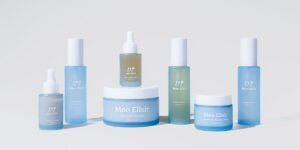In today’s world of fitness and health, the market is flooded with an overwhelming variety of products claiming to support various fitness goals. Whether it’s supplements, protein powders, energy drinks, or other fitness-related products, understanding what’s in your fitness products is crucial to achieving your health goals and avoiding unwanted ingredients. Product label literacy is essential for anyone who’s serious about their fitness and nutrition journey. Knowing how to read and interpret these labels can empower you to make informed decisions about what you put into your body. This guide aims to help you decode the complex world of fitness product labels, making it easier to distinguish between marketing jargon and actual benefits.
Read Also: Eating Right for Fitness: Simple Tips for Women
Why Is Product Label Literacy Important?
The rise of the wellness and fitness industries has led to an influx of products designed to enhance performance, aid recovery, and improve general health. However, with so many options available, it’s easy to get lost in the sea of competing claims and buzzwords. For instance, terms like “clean,” “natural,” and “organic” are often used to make products seem more appealing, but they don’t always reflect the true contents or benefits of the product.
Understanding product labels not only helps you avoid products that may not meet your nutritional needs but also ensures that you optimize your results by selecting products that truly benefit your fitness goals. Product label literacy can also help you avoid hidden sugars, unnecessary additives, and potentially harmful ingredients, ensuring you are consuming what’s best for your body.
Breaking Down Fitness Product Labels: Key Components
Reading a fitness product label isn’t just about looking at the brand name and the front of the packaging. The real value is found in the detailed information provided on the back or side of the label. Here are the key components to focus on when analyzing fitness product labels:
Serving Size and Servings per Container
The serving size is one of the most important pieces of information on the label. It tells you the amount of the product that is considered one serving, which is crucial for calculating your total intake. Be cautious here: many products, especially energy drinks and supplements, may have multiple servings in one package, which can lead to a higher intake than intended.
Serving Size: Make sure to check the serving size to understand the actual quantity you’re consuming.
Servings per Container: This shows how many servings are in the entire package. If a product has a small serving size but contains many servings, you’ll need to adjust your intake accordingly.
Calories and Macronutrients (Carbs, Fats, Protein)
For fitness enthusiasts, understanding the macronutrient breakdown of a product is crucial for achieving fitness goals such as weight loss, muscle gain, or endurance training.
Calories: Know how many calories are in a serving. For those looking to lose weight or maintain weight, understanding calorie intake is essential. For those looking to gain muscle, it’s just as important to monitor caloric intake to ensure sufficient energy for muscle repair and growth.
Protein: Protein is essential for muscle recovery and growth. A good fitness product label should provide the amount of protein per serving.
Carbohydrates: Carbs are a primary energy source for the body, especially during high-intensity workouts. Pay attention to the type of carbohydrates (simple vs. complex) to understand how they will affect your energy levels.
Fats: Healthy fats are also essential for overall health, but excess saturated or trans fats should be avoided in fitness products.
Micronutrients (Vitamins and Minerals)
In addition to macronutrients, fitness products often contain added vitamins and minerals to support overall health and specific body functions. For example:
Vitamin D is crucial for bone health and muscle function.
B vitamins are important for energy production.
Magnesium is involved in muscle function and recovery.
When selecting a product, check if it provides a significant amount of these micronutrients to support your fitness needs.
Ingredient List
The ingredient list provides insight into what’s actually in the product. It’s essential to read this section carefully to ensure the product contains quality ingredients and doesn’t have unnecessary additives or fillers.
Natural vs. Artificial: Look for natural sources of nutrients, especially in protein powders, energy bars, or meal replacement drinks. Avoid products with a lot of artificial additives, such as artificial sweeteners, colors, or preservatives.
Supplements: Some fitness products, like protein powders or pre-workout supplements, may contain added ingredients like creatine, caffeine, or beta-alanine. Make sure these ingredients align with your personal health needs and goals.
Allergens: If you have allergies, always check for common allergens such as gluten, soy, or dairy in the ingredient list.
Additives and Sweeteners
Many fitness products, especially drinks and protein powders, use sweeteners to enhance flavor. These can be either natural or artificial:
Natural sweeteners like stevia and monk fruit are often better choices as they don’t raise blood sugar levels.
Artificial sweeteners like aspartame or sucralose may be found in many sugar-free products. While these are generally safe for most people, they can cause digestive discomfort in some individuals.
Look for labels that list natural flavoring and limit the use of preservatives or artificial additives.
Certifications and Claims
Many fitness products come with labels or certifications that tell you something about the product’s quality or ethical standards:
Organic: This means the product was produced without synthetic pesticides or fertilizers.
Non-GMO: Indicates that the product does not contain ingredients derived from genetically modified organisms.
Gluten-Free: A must for individuals with celiac disease or gluten sensitivity.
Keto-Friendly: Indicates that the product fits within the ketogenic diet guidelines, which are low in carbohydrates and high in fats.
Be cautious of over-hyped claims like “fat-burning” or “muscle-building.” Often, these claims are based on marketing strategies and may not be supported by evidence.
Decoding Fitness Jargon: What to Look Out For
Fitness product labels often include terminology that can be confusing or misleading. Here are some common terms to watch for:
“All Natural”: This label doesn’t guarantee that the product is healthy or free of additives. Always check the ingredient list to verify what’s inside.
“Proprietary Blend”: This refers to a mixture of ingredients that the company doesn’t disclose in specific amounts. It can be difficult to know exactly what you’re consuming with a proprietary blend.
“Clean”: Often used to describe a product that has minimal artificial ingredients or processing, but it’s important to still review the ingredient list for a clearer picture.
How to Make Informed Choices
Now that you know what to look for, here are some tips for making informed decisions:
Research: Don’t just rely on the label. Look up reviews and check for independent lab testing of products, especially for supplements.
Track Your Intake: Use a food tracker app to monitor your daily intake of macronutrients and micronutrients. This will help you choose products that fill gaps in your diet.
Consult a Professional: If you’re unsure about a product or its ingredients, consider consulting a nutritionist or dietitian, especially if you have specific fitness goals or dietary restrictions.
Read Also: ‘Undo What Isn’t Yours’: Monica Yates is Helping Redefine Feminine Power for the Modern Woman
Becoming literate in reading fitness product labels is an essential step towards achieving your fitness and wellness goals. It allows you to make informed choices, avoid unnecessary or harmful ingredients, and select products that will genuinely support your needs. By understanding the key components of a product label, you can optimize your fitness regimen and ensure that you’re fueling your body with the best possible nutrition to reach your desired results.








